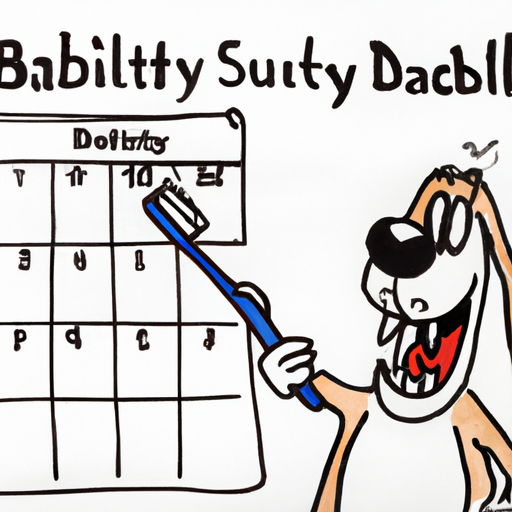As a caring and responsible dog owner, it is crucial for you to understand the importance of your dog’s dental hygiene. You may be surprised to find out that dental care is not only about keeping your dog’s breath fresh, but it also plays a vital role in their overall health. This guide will walk you through everything you need to know about brushing your dog’s teeth, including how often it should be done and the benefits it provides.
1. Importance of Oral Hygiene in Dogs
Just like in humans, poor oral hygiene in dogs can lead to a host of dental and medical problems. These include gum disease, loss of teeth, and even serious systemic issues like heart disease and kidney problems.
- Gum Disease: Over time, plaque and tartar build-up can lead to inflammation and infection in your dog’s gums, causing gum disease.
- Tooth Loss: Severe gum disease can eventually lead to tooth loss, making it difficult for your dog to eat and causing significant discomfort.
- Systemic Diseases: Recent research has shown that the bacteria from dental infections can spread to other parts of the body and potentially cause heart, liver, or kidney disease.
2. How Often Should You Brush Your Dog’s Teeth?
The simple answer to this question is: as often as possible. Most veterinarians recommend brushing your dog’s teeth daily, just like you would your own. However, if daily brushing is not feasible, aim for at least three to four times a week.
| Brushing Frequency | Effectiveness |
|---|---|
| Daily | Most Effective |
| 3-4 times per week | Moderately Effective |
| 1-2 times per week | Minimally Effective |
Remember, consistency is key. The more regularly you brush your dog’s teeth, the healthier they will be.
3. Choosing the Right Products for Brushing Your Dog’s Teeth
When it comes to brushing your dog’s teeth, it’s important to use products that are specifically designed for dogs.
- Dog Toothpaste: Never use human toothpaste for your dog. It contains ingredients that can be harmful if swallowed. Instead, opt for a dog-specific toothpaste. These come in dog-friendly flavors like chicken or peanut butter.
- Dog Toothbrush: Dog toothbrushes are designed to fit comfortably in your dog’s mouth and effectively clean their teeth. They come in different sizes to suit different breeds.
- Dental Chews: While not a substitute for brushing, dental chews can help reduce plaque and tartar build-up between brushings.
4. How to Brush Your Dog’s Teeth
Brushing your dog’s teeth might sound daunting, but with patience and practice, it can become a simple addition to your dog’s grooming routine.
- Start by getting your dog used to the taste of the toothpaste. Put a small amount on your finger and let them lick it off.
- Once they are comfortable with the taste, you can introduce the toothbrush. Let them sniff and lick the toothbrush with the toothpaste on it.
- Gradually start brushing their teeth. Lift their lips to expose the teeth and gums and gently brush in a circular motion. Focus on the outside surfaces of the teeth as this is where most plaque and tartar build-up occur.
- Always end the brushing session with praise and a reward to make the experience positive for your dog.
5. What if My Dog Won’t Let Me Brush Its Teeth?
If your dog is resistant to having its teeth brushed, don’t despair. Here are some alternatives:
- Dental Chews and Treats: These are specially designed to clean your dog’s teeth as they chew.
- Dental Toys: Similar to dental chews, these toys help clean your dog’s teeth while they play.
- Professional Cleaning: If your dog’s teeth are in poor condition, it might be best to schedule a professional cleaning with your vet.
FAQ’s
Q: Can I use human toothpaste to brush my dog’s teeth?
A: No, human toothpaste contains ingredients like fluoride that can be harmful to dogs if swallowed. Always use a dog-specific toothpaste.
Q: How early should I start brushing my puppy’s teeth?
A: You can start brushing your puppy’s teeth as soon as they have all of their adult teeth, typically around 6 months of age.
Q: My dog hates having its teeth brushed. What can I do?
A: Start slow and make the experience as positive as possible. If your dog continues to resist, consider using dental chews, dental toys, or scheduling a professional cleaning.
Remember, your dog’s oral health is a vital part of their overall well-being. By brushing your dog’s teeth regularly, you’re not just ensuring fresh breath and clean teeth, but also helping to prevent serious health issues down the line. You’re doing a great job by seeking this information. Keep up the good work, caregiver!



